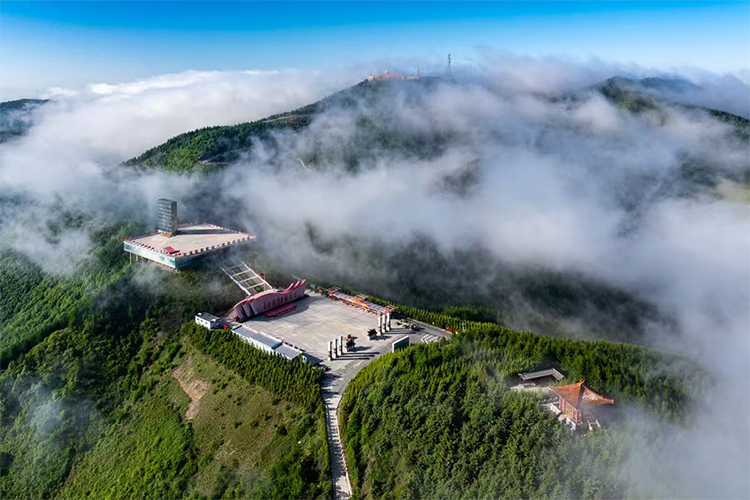Liupan Mountain: Explore Long March History Amid Lush Green Peaks
1. Introduction: A Majestic Tapestry of History and Nature
Nestled on the transition zone between the Loess Plateau and the Tibetan Plateau in northwest China, Liupan Mountain is a forested ‘green miracle.’ It was the last high range the Red Army crossed during the Long March, the place that inspired Mao Zedong’s poem evoking high skies and migrating geese, and today it stands as an ecological treasure with over 80% forest cover, cool summer temperatures, and rare wildlife. Here you can follow revolutionary history, explore Silk Road relics, and experience an uncommon blend of nature and culture.
2. Core Highlights and Selling Points
‘Final Long March pass and an ecological Silk Road oasis’ captures Liupan Mountain’s dual identity as both historical witness and natural guardian. As a national nature reserve, it preserves a complete forest ecosystem populated by rare species such as leopard cats and golden eagles. The mountain is also famous because of Mao’s poem ‘Qing Ping Yue: Liupan Mountain,’ making it an important Red tourism landmark.
Key reasons to visit:
– Red culture landmark: The final high mountain the Red Army scaled, with powerful revolutionary associations.
– Ecological paradise: Forest coverage above 80% and average summer temperatures around 18°C, earning it the nickname ‘the Northwest’s green lung.’
– Silk Road heritage: Nearby sites include the Xumishan Grottoes and the Danxia landforms at Huoshizhai, creating a rich multi-cultural corridor.
3. Historical Depth and Cultural Meaning
Liupan Mountain’s history reaches back to the Silk Road era, when merchants and pilgrims passed through this corridor. In modern history, it entered the national consciousness during the 1935 Long March, when Mao’s leadership and poetry elevated the mountain into a symbol of revolutionary spirit.
Cultural highlights:
– Long March memories: Hike the ‘Red Army Trail’ that still winds through the ridge, retracing the soldiers’ footsteps.
– Silk Road relics: Visit Xumishan Grottoes (Northern Wei to Tang dynasty Buddhist art) and Huoshizhai’s Danxia geology showcasing deep time and tectonic change.

4. Natural Scenery and Seasonal Changes
Liupan Mountain offers scenic beauty across all four seasons:
– Spring: Wildflowers, azaleas, and mountain peach blossoms in bloom.
– Summer: Cool respite from the heat, dense forests, and bubbling streams.
– Autumn: A tapestry of red and gold as the forests turn.
– Winter: Snow-draped slopes and spectacular rime ice.
Best time to visit: June to September for summer coolness; October for peak autumn colors.
Weather and visual phenomena:
– Misty days: Clouds and fog create ethereal, otherworldly views.
– Clear skies: Wide vistas revealing the junction of the Loess Plateau and Tibet Plateau.
5. Activities and Experiences
Beyond sightseeing, Liupan Mountain offers active and cultural experiences:
– Hiking and trekking: Follow the Long March route or forest trails to feel history and wilderness combined.
– Birdwatching and wildlife spotting: Golden eagles, koklass pheasants, and other rare birds inhabit the area.
– Cultural visits: Explore the Xumishan Grottoes and their millennia-old Buddhist sculptures.
– Photography: Sunrise, sea of clouds, autumn foliage, and snow scenes provide year-round opportunities.
6. Ecology and Pristine Nature
Liupan Mountain is a key ecological barrier in northwest China with intact forest ecosystems, fresh air, and pure water. Protected species like the leopard cat and Himalayan musk deer find refuge here, making it a living gene bank for wild flora and fauna.

7. Location and Transport
Liupan Mountain sits in southern Ningxia, spanning Guyuan and Jingyuan counties, with convenient access:
– By car: About a 3-hour drive from Yinchuan.
– By public transport: Bus from Guyuan to Jingyuan, then transfer to a park shuttle.
– By train: High-speed train to Guyuan station, followed by a taxi (roughly 1 hour).
8. Visitor Tips and Suggested Routes
Recommended itineraries:
– One-day highlights: Xiaonanchuan (forest valley) → Liangdiankong (popular summer retreat) → Red Army Long March Memorial Hall.
– Two-day in-depth: Add Xumishan Grottoes or the Danxia landscapes at Huoshizhai.
Who should visit: Families, hikers, history buffs, and nature lovers. The park has sightseeing buses and cable cars on some sections.
9. Crowds and Seasonality
– Peak season (June–October): More visitors, but still quieter than many eastern attractions.
– Off-season (November–May): Fewer people and tranquil scenery—ideal for travelers seeking solitude.

10. Guides and Multilingual Services
– Audio guides: Some sites offer Chinese and English audio explanations.
– Signage: Major attractions have Chinese and English signs for easier navigation.
11. Tickets and Opening Hours
– Admission: Approximately 100 yuan (usually includes park shuttle).
– Opening hours: 08:00–18:00 (summer hours may extend to 18:30).
– Booking: Online advance booking is recommended during the high season.
12. Food and Accommodation
– Dining: Onsite restaurants serve local Ningxia specialties—try lamb dishes and buckwheat noodles.
– Lodging: Comfortable hotels are available in Jingyuan or Guyuan, with mountain guesthouses and homestays for a rustic experience.

13. Conclusion: Why Liupan Mountain Deserves Your Visit
Liupan Mountain is more than a peak; it is a living epic of nature and history.
Here you can:
– Trace the Long March and feel revolutionary spirit.
– Discover Silk Road relics and touch ancient culture.
– Relax in pristine forests and enjoy cool summer weather.
– Photograph dramatic seasonal landscapes and record unforgettable moments.
If you love nature, history, and cultural depth, Liupan Mountain is an unmissable secret on any northwest China itinerary.


